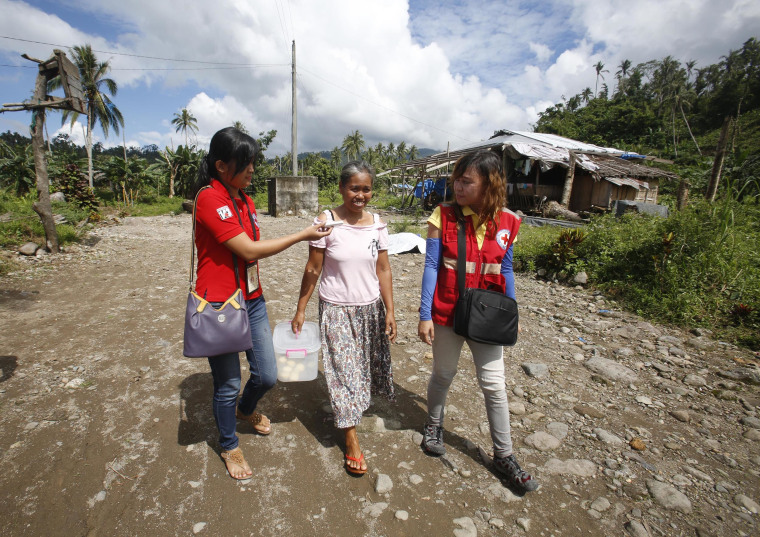The solemn sounds of prayers and church bells echoed Saturday in memory of the 7,000 people who perished when Typhoon Haiyan — one of the strongest storms ever recorded — made landfall in the Philippines one year ago. The once-in-a-generation storm wiped out whole neighborhoods in the Leyte region and displaced 4 million people, many who are still struggling in temporary shelters.
But as frustrations persist over the government’s response, humanitarian groups and survivors-turned-volunteers are slowly making inroads. Under the Philippine Red Cross’ recovery plan, 192 out of 400 schools have been repaired, while health centers are also being rehabilitated, said Kate Marshall, a spokeswoman for the International Federation of the Red Cross and Red Crescent Societies.
Impoverished rural areas were especially battered and found little aid. “The typhoon had torn off classroom roofs, ruined books and equipment, and trashed hand washing and toilet facilities,” Marshall told NBC News. “Not only that, even before Haiyan, some of the schools were in a state of disrepair and teachers were often forced to pay for repairs out of their own pockets.”
Americans donated some $90 million to the Red Cross for victims of Haiyan, known locally as Typhoon Yolanda. Marshall added that Filipinos are also leading the charge to rebuild their communities. One volunteer, 24-year-old Hubert Quijano, had survived Typhoon Washi, which slammed the Philippines in 2011. He is one of hundreds of local volunteers who are restoring latrines, installing faucets and building septic tanks in schools and other much-needed facilities, Marshall said.
“Once fully restored, these school facilities will become a safer focal point for future evacuations as well as somewhere students can learn with a sturdy roof over their heads,” she added.
About 3,000 people still live in tents in the hard-hit city of Tacloban, though the local government has pledged to move them to permanent housing by the end of the year. Under the long-term plan to protect against similar typhoon onslaughts, officials want to build an elevated road connecting Tacloban to two coastal towns that also will serve as a dike. Philippine President Benigno Aquino III told residents during a visit Friday to nearby Eastern Samar province that he was eager to see progress: “Like you, I am impatient.”

IN-DEPTH
- One Year After Typhoon, Filipino Fishermen Struggle to Recover
- Philippines' 'Crisis Mappers' on a Mission to Save History
- Filipinos to Receive Disaster Alerts on Cellphones